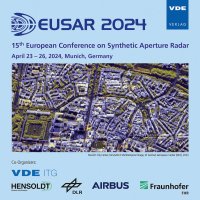Requirements from the Copernicus soil moisture and flood monitoring services for Sentinel-1 and ROSE-L mission operations
Konferenz: EUSAR 2024 - 15th European Conference on Synthetic Aperture Radar
23.04.2024-26.04.2024 in Munich, Germany
Tagungsband: EUSAR 2024
Seiten: 5Sprache: EnglischTyp: PDF
Autoren:
Wagner, Wolfgang; Bauer-Marschallinger, Bernhard; Roth, Florian; Briese, Christian; Reimer, Christoph; Lacaze, Roselyne; Moroz, Michal; Salamon, Peter; Davidson, Malcolm
Inhalt:
The Sentinel-1 Next Generation (Sentinel-1NG) and the Radar Observing System for Europe at L-band (ROSE-L) missions are currently being designed to advance the successful systematic monitoring capabilities of the Sentinel-1 mission. As many Copernicus services will benefit from using the resulting dual-frequency (C- and L-band) SAR data in a synergistic manner, the question arises which orbit configuration serves the Copernicus services best? The first option is to fly ROSE-L in convoy with Sentinel-1 – and later with Sentinel-1NG – to acquire matching dual-frequency SAR imagery just a few minutes apart. The second option is phase the satellites orbits such as to maximise the daily global coverage achieved by all satellites. This contribution is intended to highlight that the second option is clearly preferred by the Copernicus Global Land Monitoring Service and the Copernicus Emergency Management Service that provide amongst other data products near-real-time soil moisture and flood monitoring data serving a broad range of applications (from emergency response to data assimilation). The availability of daily SAR images at either C- or L-band will ensure that also smaller, rapid flood events and highly dynamic soil moisture processes are captured. Furthermore, the availability of L-band data interleaved with the C-band data stacks can be expected to improve the retrievals significantly. These advantages outweigh the modest improvements in retrieval accuracy that can be expected for soil moisture and flood retrieval by reducing the time difference between C- and L-band acquisitions by flying the satellites in convoy.


